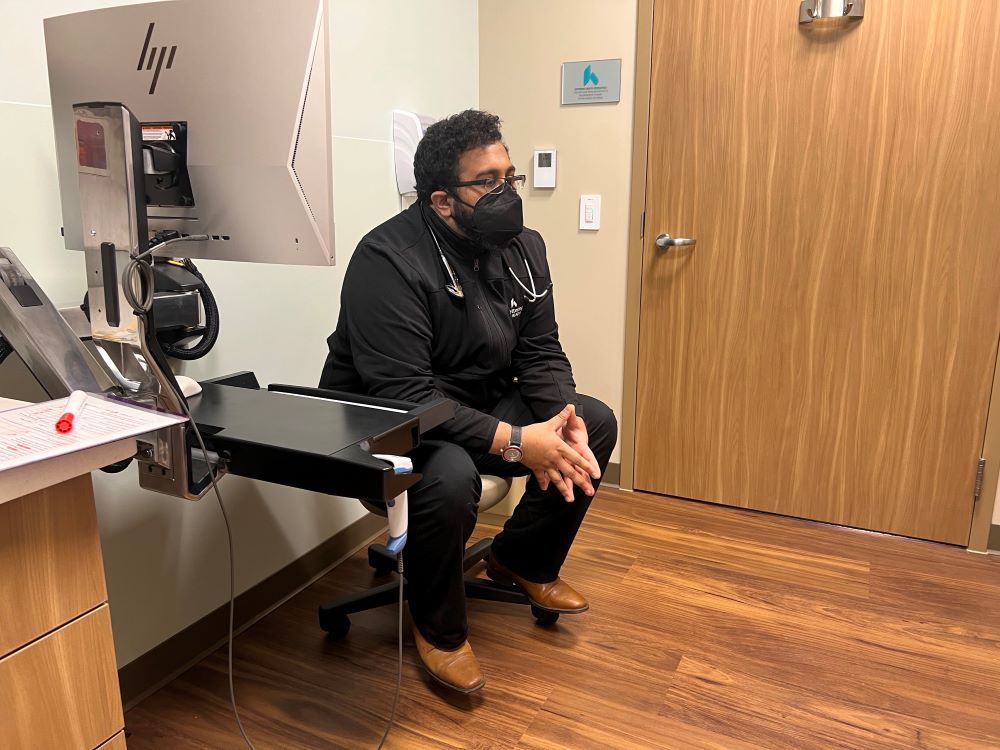Primary Care
Want to learn more about this at Kettering Health?
From the phones in our pockets to the smart watches on our wrists, we have access to a lot of data about our health. We can know how many steps we’ve taken; how long we’ve slept; our heart rate while we exercise—and it all means something.
But it can be hard to know what all that data is telling us and how to put it to good use.
Dr. Rukan Ahmed, a primary care provider at Kettering Health Springfield, sees a lot of health data from his patients, sent right from their phones. “I often have patients send me screenshots of that data on MyChart,” he explains. “They may not be entirely sure what it all means, but it is certainly useful to me.”
In fact, it’s because of this data that he can do more for patients and help them achieve their goals.
What should you track?
Your active calories burned or active heart rate on the treadmill may be the first thing you think of when it comes to your smart device. But “there are metrics that are related to all aspects of fitness and health,” Dr. Ahmed says.
Today’s smart devices and apps can distill your days into facts and figures—steps taken, overall distance traveled, average heart rate, sleep and wake cycles, and even menstrual cycle tracking.
Newer devices can seemingly read beneath your skin, measuring blood-oxygen levels, taking your temperature, signaling stress, and acting as an on-the-go electrocardiogram, alerting you to potentially dangerous changes in your heart’s rhythm.
Data from his own fitness tracker led Dr. Ahmed to get a sleep study. “I didn’t know I was waking up multiple times during the night and then just going back to sleep. I didn’t remember it at all,” he explains. But his fitness tracker knew, so to speak. The charts from his tracker revealed his inconsistent sleep, which led him to Sleep Medicine to find the cause of his unrestful nights.
How to track it
Based on conversations with patients, Dr. Ahmed recommends considering a few factors when tracking health metrics: the kind of device you want (wearable or something on your phone), its durability, and how you want to interact with and use the device.
While newer cell phones can track similar metrics as smart watches and fitness trackers, consider app compatibility, as well as whether they’re free or require a fee.
Check to see if different apps can feed into a dashboard on your phone, where you can see all your health data in one place. “A lot of people would not want to start over or not be able to import their data,” Dr. Ahmed says.
Some brands offer communities through their apps, letting you share progress, socialize, and host competitions—but they may charge for these features.
Other factors you’ll want to consider, too, are battery life and durability, whether you want buttons or a touch screen, water resistance for swimming, and even if it is covered by your insurance’s HSA or FSA.
Review data and goals with your provider
A primary care provider can help you know which metrics to track and guide you to create achievable goals. “I ask my patients, ‘Here’s where we are at, here’s an objective view of things. What is realistic for us as far as creating achievable goals?’” explains Dr. Ahmed. “Health and fitness look different for every single person.”
Though your provider can’t be with you throughout the day, the health data you collect and share will help them turn those facts and figures into better health and well-being.










